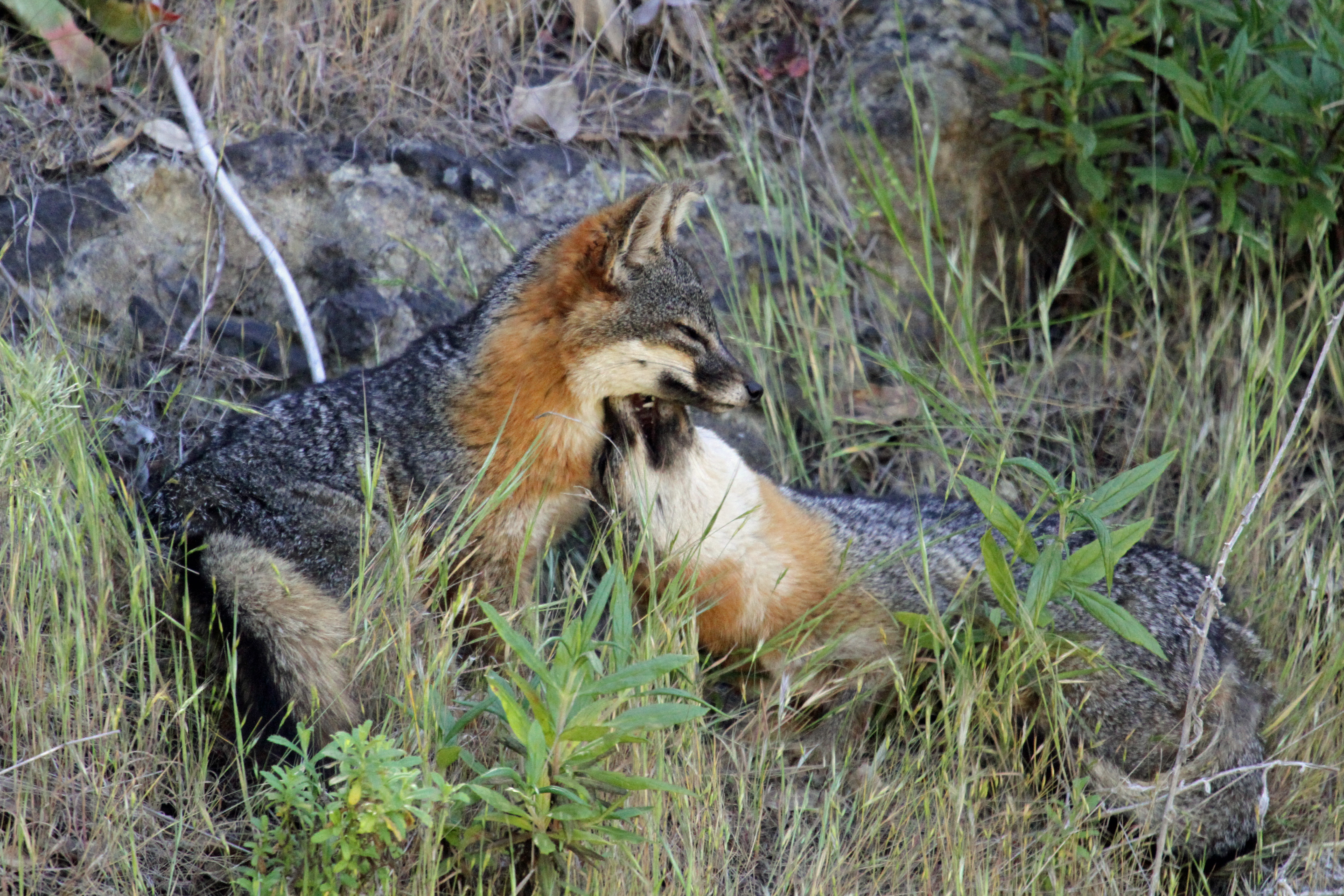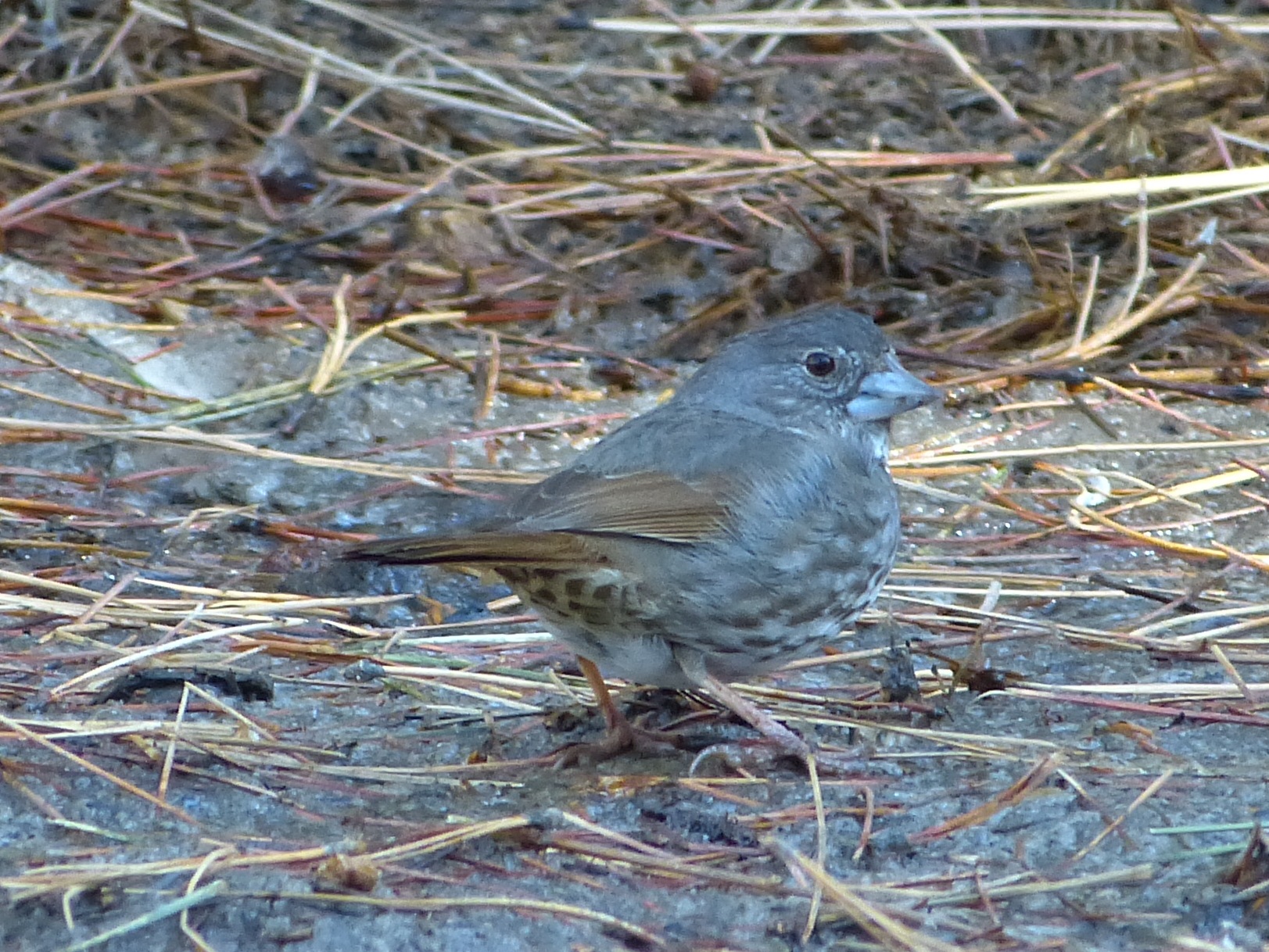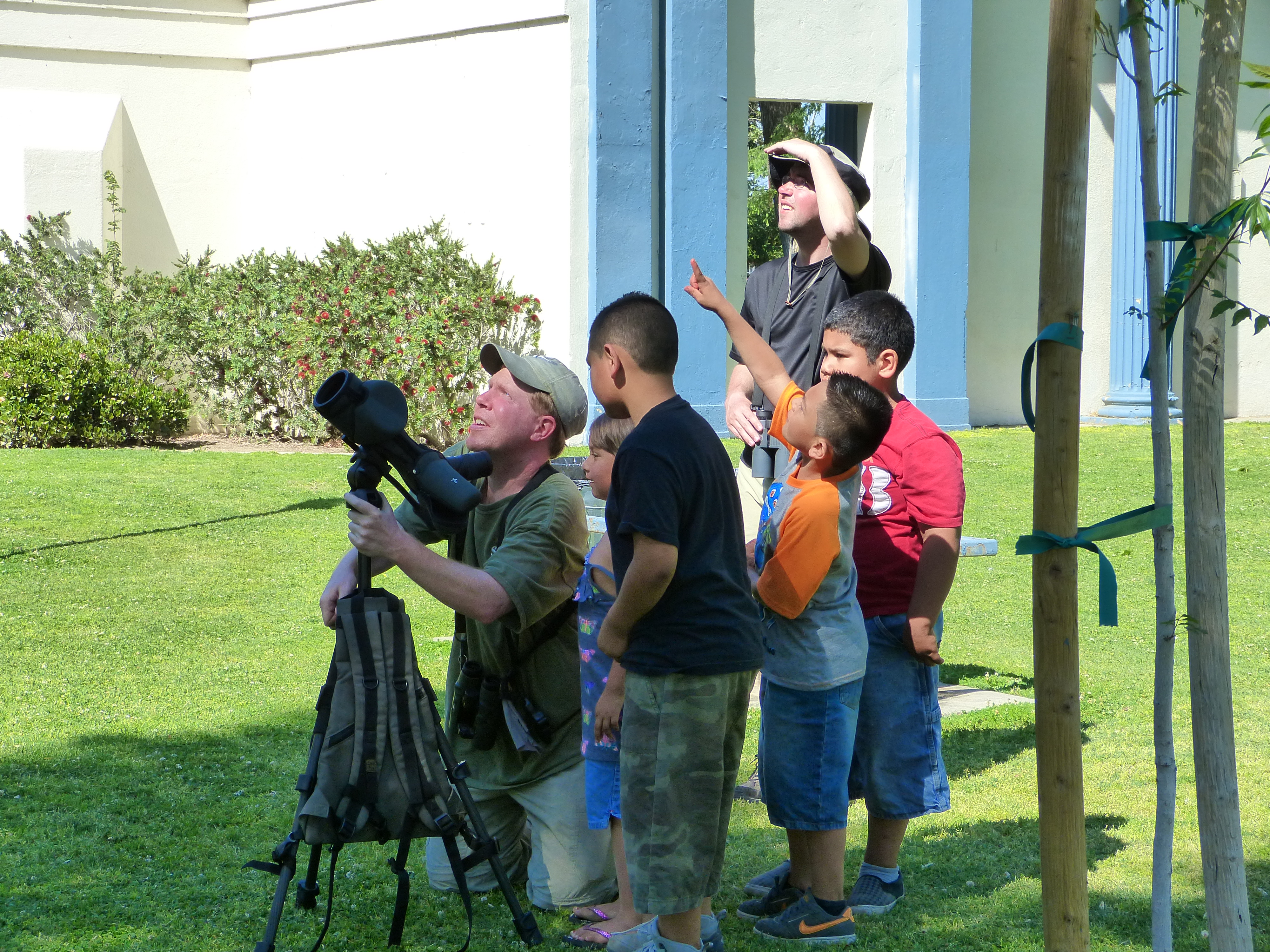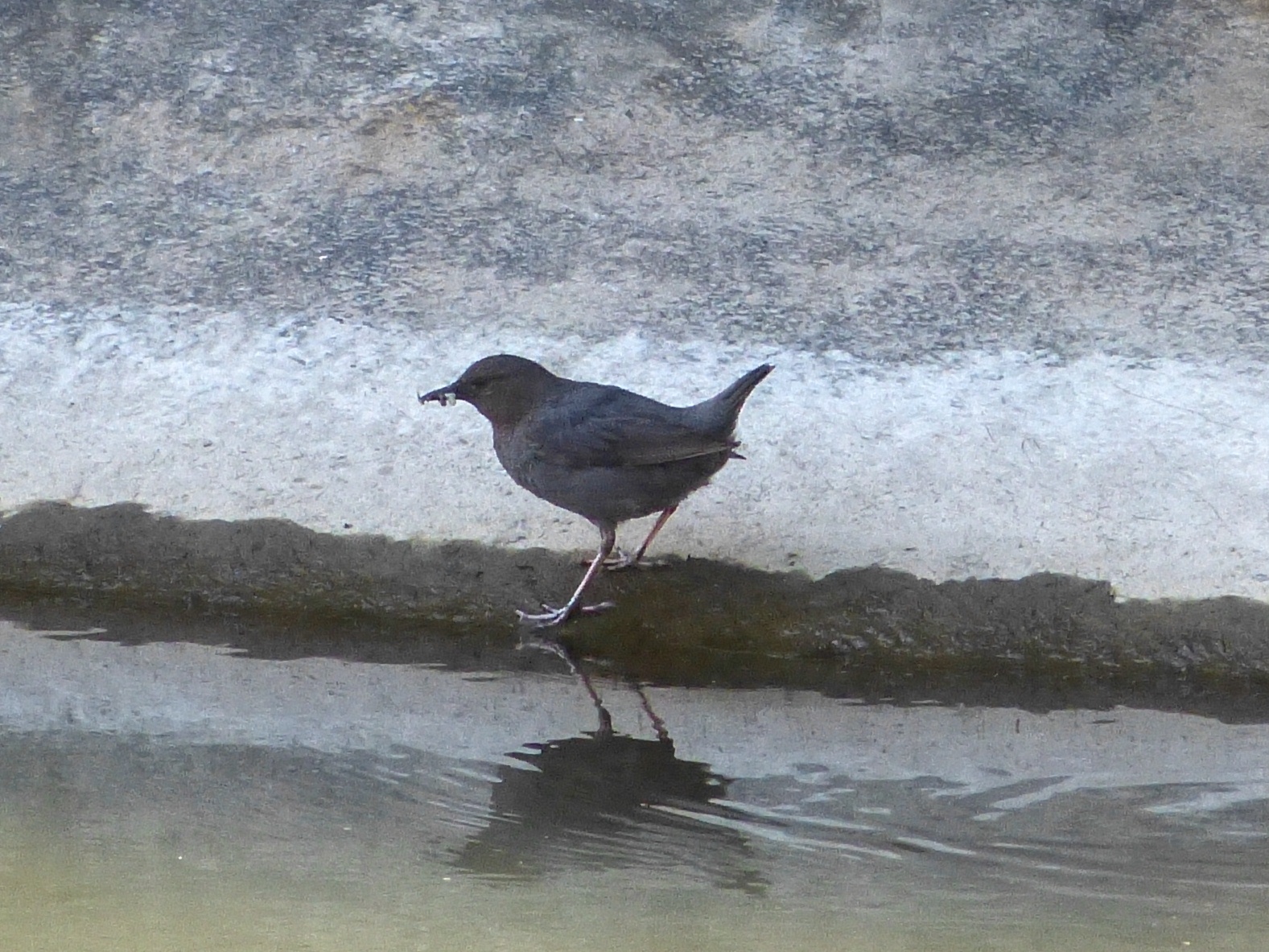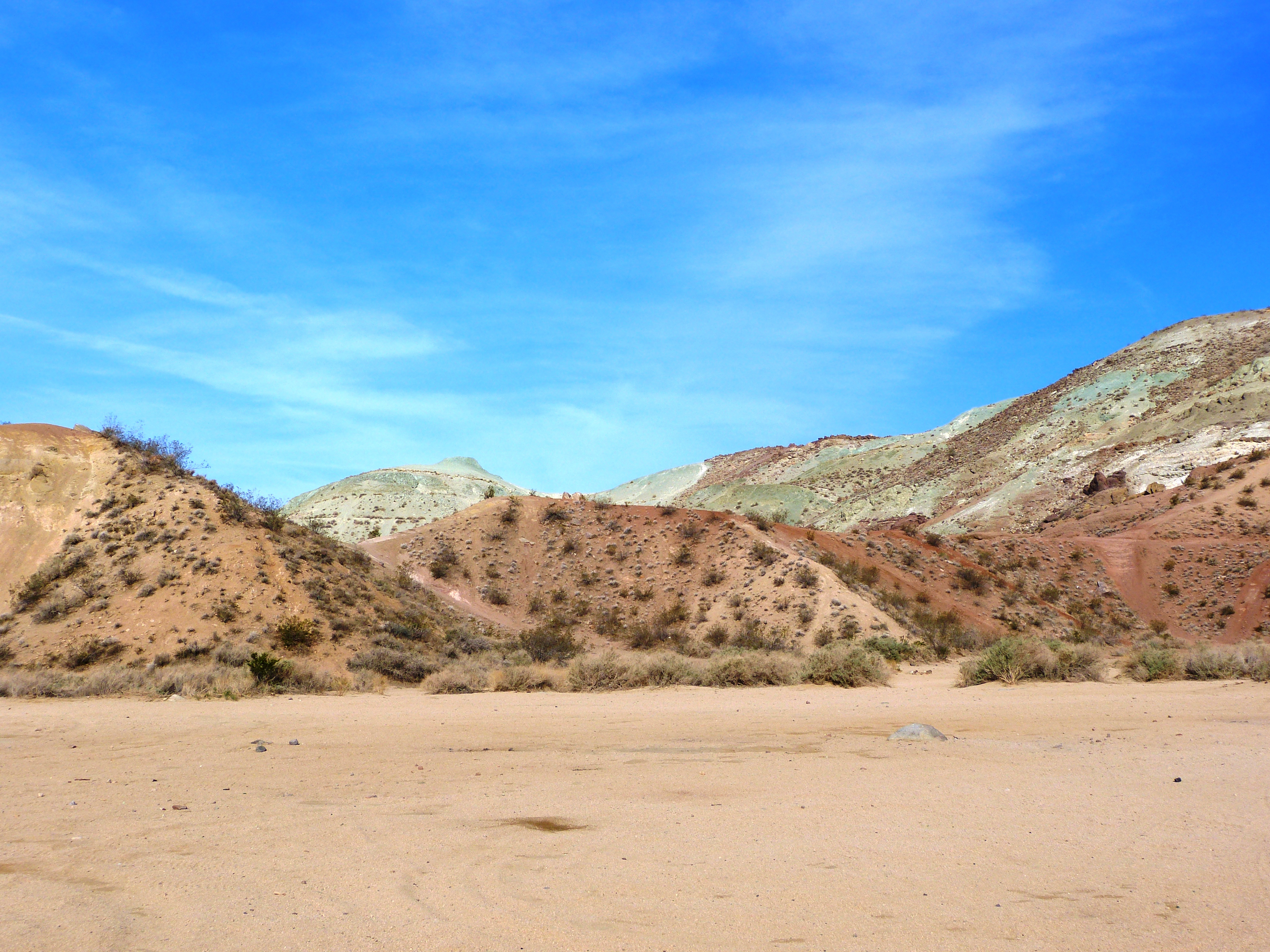David and I spent June 2 in Spearfish Canyon. His flight to Rapid City had been on time and his bicycle survived the flight without needing any repairs, so we had two full days to explore the Black Hills area before he started the RASDak (Ride Across South Dakota) cycling event.

This is a beautiful area and our 14-mile drive on US Highway 14A (Spearfish Canyon Scenic Byway) to the Spearfish Canyon Natural Area was lovely. Above, Bridal Veil Falls, about the mid-point of the drive. We enjoyed our hike from the Visitor Center to Roughlock Falls (top photo in the first post in this series). David found both an American Robin on her nest and an American Redstart visiting its nest in a small bush by the side of the creek. Black-headed Grosbeaks also nest here, but I never got a great look. David, however, saw an adult male so close that he could even see the yellow on its lower belly while I was in the restroom. My best looks were of a pair eating trash in the picnic area.

My main birding goal here was American Dipper, a life bird for David. He got a quick look at one on our hike back to the car, but a little later we had better looks at two dippers a bit farther up the road under a bridge with a nest box. We also saw Least Chipmunks at both the Roughlock Falls picnic area and the area by the bridge.

On Saturday morning, David was very excited to head to Devils Tower. I had been there on my big road trip in 2018, but it was David’s first visit. I can’t say it better than I did then – it’s just a hunk of rock jutting up from the earth, but so very beautiful and inspiring. We walked the 1.5 mile trail closest to the tower and took time to talk with other visitors and take plenty of photos.

Even with our slow pace, we were done early enough to go to Thunder Basin National Grassland. We turned off the highway onto a gravel road and almost immediately four Long-billed Curlews flew across the road right in front of us. Two more stayed behind in the field and we got pretty good looks at them. For someone who refuses to call himself a birder, David was getting some very nice life birds!
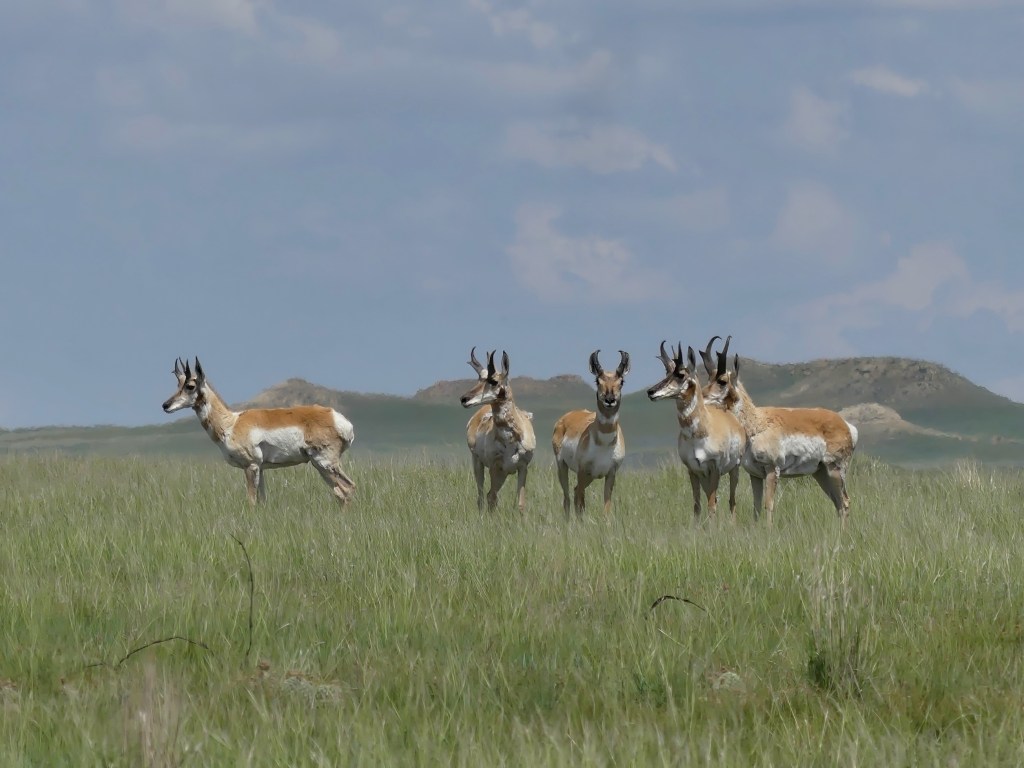
Pronghorn are the fastest land mammal in the Western Hemisphere and we saw many of these beautiful animals at Thunder Basin. They are often called antelope, but they are in a different family and have no close relatives. The San Diego Zoo website has a page on pronghorn with some fascinating facts.
The first RASDak ride was on Sunday from Spearfish to Newcastle, Wyoming. I headed straight to Thunder Basin. This national grassland is in the the transition zone between the Great Plains to the east and the sagebrush steppe to the west and I love that landscape.
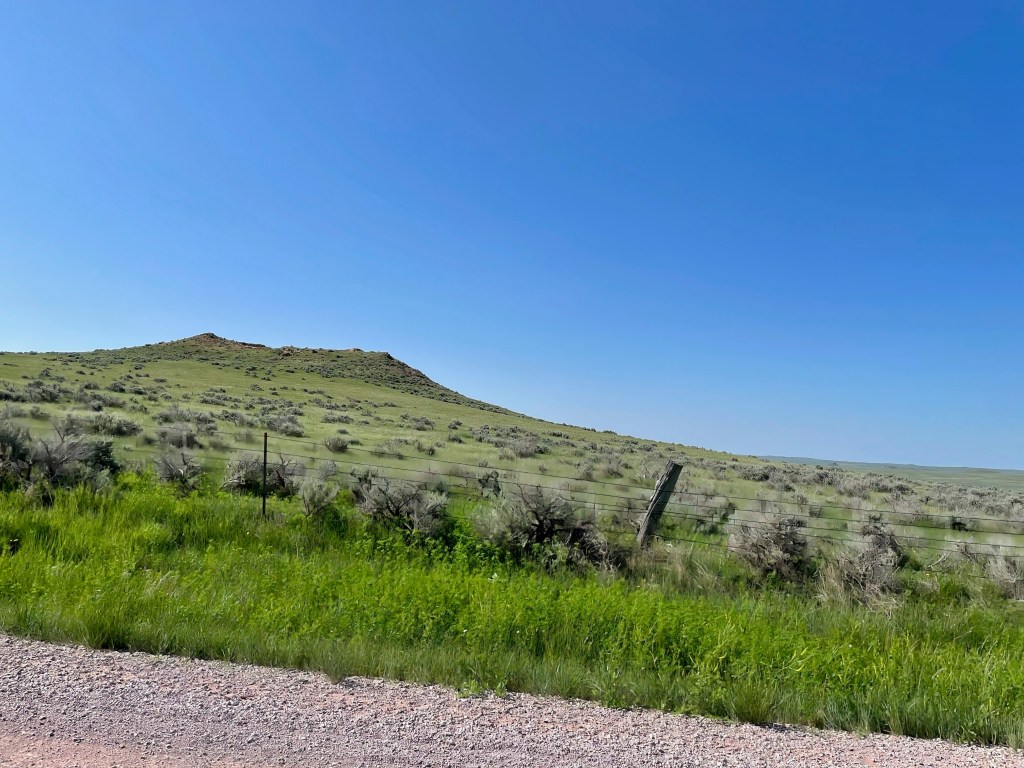
After David’s ride, we drove around Newcastle and saw a few birds including the brilliant Mountain Bluebird below.
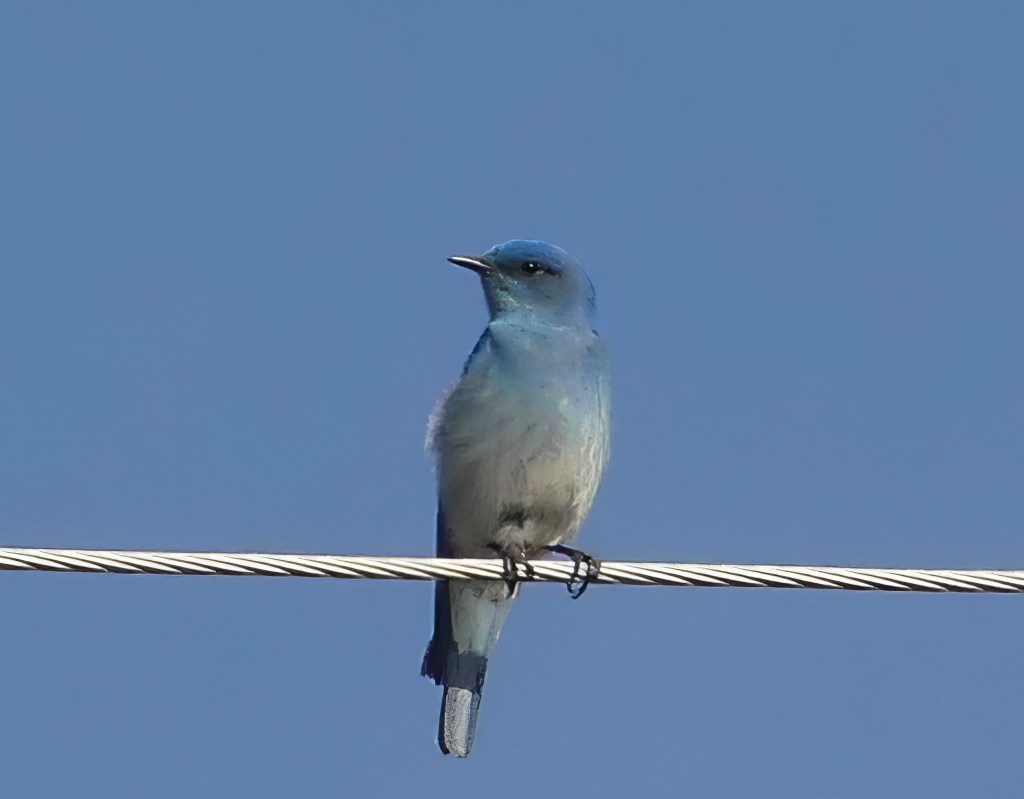

The next morning David left for Hot Springs and I went to Thunder Basin once again. I saw several birds like the one in the photo below that proved to be my biggest ID challenge. I took dozens of photos and submitted some to Merlin, a bird ID app, right there on the side of the road. My heart fluttered with excitement when Merlin suggested that it was a Sprague’s Pipit, a much-wanted life bird, but somehow I knew it couldn’t be. Actually, it was a juvenile Horned Lark and I had a good learning experience.

Fall River, fed by thermal warm springs, runs directly through the little town of Hot Springs. Later that afternoon, we enjoyed a pleasant walk on the Freedom Trail which runs alongside the river. There were large numbers of Cliff Swallows nesting under a bridge and other birds in the large trees.
The next day it was on to Custer, David’s shortest ride. I didn’t have time for morning birding as David finished so early, but that gave us time for a trip to Mount Rushmore. I liked it more than I expected as the surrounding area is classic Black Hills with beautiful ponderosa pine covering the mountainside.

I was a bit disappointed that we missed the mountain goats at Mt. Rushmore, but in addition to the scenery, I enjoyed the White-winged Juncos, another Least Chipmunk, and a Melissa Blue butterfly (top left below). The other butterflies were also seen in the Black Hills.




On Wednesday, David rode his bicycle to Rapid City and I drove the wildlife loop at Custer State Park. Below, the lush landscape of the Black Hills is so different from the landscape to the east or the west, although it has prairie dog towns which we also saw in the badlands and at Devils Tower. It’s no wonder that we saw so many prairie dogs; about half of the U.S. population lives in South Dakota, Wyoming, and Montana.

Custer State Park also hosts large numbers of bison and David had quite an experience sharing the road with them while he was on a bicycle. I will share a link once he writes his story.
I don’t know how we crammed so many activities into Thursday. David rode to Sturgis and I went to Canyon Lake Park in Rapid City. The park did not have anything unusual, but I liked the pretty Red-winged Blackbirds, one of David’s favorite birds.


Our first afternoon activity together was a quick trip to Bear Butte Lake. You will be shocked at what I did next, but when you are traveling with a friend, you try to make them happy. So, there was no way we could miss the Sturgis Motorcycle Museum. It actually turned out to be more interesting that I had expected and you can see how much fun David had in the photo below.

We attended the RASDak closing dinner next and still had time for a second trip to Bear Butte Lake. We saw quite a few birds at the lake; my favorite was this accommodating Upland Sandpiper.
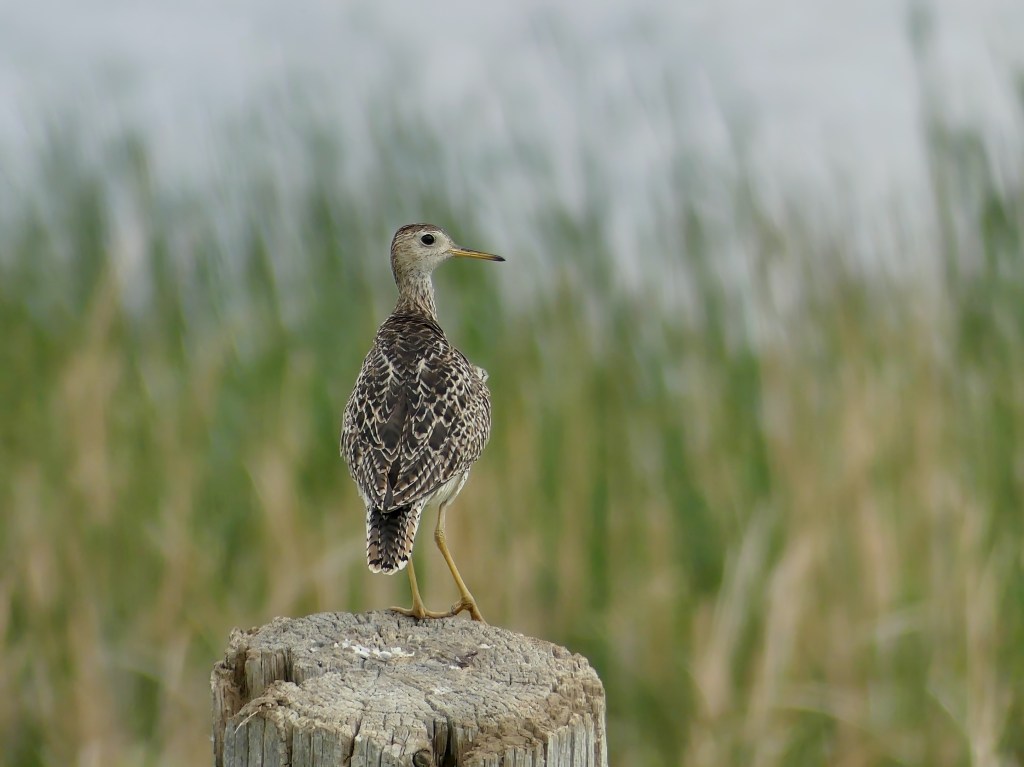
The last day of RASDak was back to Spearfish to complete the loop. I spent the early morning in Spearfish Canyon looking for Cordilleran Flycatcher. OK, birding friends, you can laugh. I know that this fall it will be lumped with Pacific Slope Flycatcher, which I have already seen. I am usually very good with avian taxonomy, but I suppose the desire for a lifer prevailed over knowledge. I easily found the bird singing, but only had one quick view of its belly. I finally gave up and went to the D.C. Booth Historic National Fish Hatchery to wait for David where I photographed the Wood Duck below.

We went back to Spearfish Canyon together to continue the search for Cordilleran Flycatcher and David got a quick look at one. We finally figured out that there was a nest in the tree we were watching, but the bird zipped in and out on the back side where it was impossible to see. Our luck with the dippers was much better. We enjoyed watching one fly up and down the river and David got to see it duck under water. He climbed down the creek bank to get the photo below.

On June 10, David joined a couple hundred other cyclists for the Big Mick, a one-day 109-mile bicycle ride on the George S. Mickelson Trail from Deadwood to Edgemont. This successful rail trail conversion is one of the most scenic in the U.S. and David loved it. However, his final day of riding was wet and one of his coldest ever. After riding 450 miles in seven days, David was feeling good and still smiling.

While David was cycling through the heart of the Black Hills, I drove the western route through Wyoming to get from Deadwood to Edgemont. I had 41 Wyoming birds and my goal was 50 species. I birded the LAK Reservoir near Newcastle again and saw a few new birds. I also met Scott Rager, a top Wyoming birder. Scott was very friendly and offered a few tips before I had to move on. (Spoiler alert: Scott will appear again in part 4.)
After picking up David in Edgemont, we drove to Wall, SD and spent the next day at Badlands NP. David flew home the following morning and I took the car for a wash before having a few more adventures. Stay tuned for the finale to the trip.

Continue to part 4, the last story about this trip Road Trip 2023: Days 19-25 – Wyoming and Nebraska (Part 4 of 4)
































